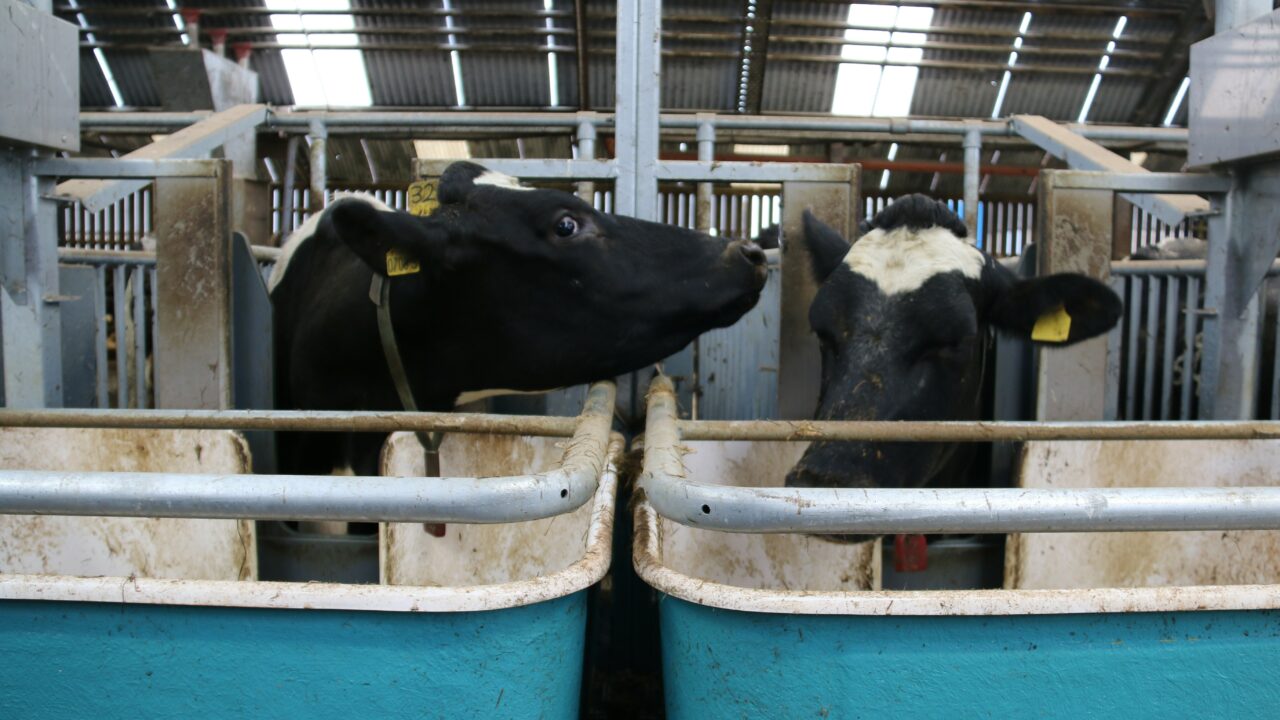The Agri-Food and Biosciences Institute (AFBI) in Hillsborough, Co. Down is home to one of the UK’s top £PLI ranking herds – but just what difference do the herd’s genetics make?
AgriLand joined World Dairy Summit delegates as they toured around the facilities to see what the cows get up to and how they have managed to become one of the country’s most efficient dairy herds.
What is £PLI?
£PLI (Profitable Lifetime Index) – similar to EBI – is a way of measuring almost every aspect of a cow’s performance and calculating her net lifetime value to the herd.
The higher a cow’s £PLI, the more money she is estimated to make the herd.
The AFBI herd consists of 340 cows plus 180 followers and includes a mix of Holsteins, Jerseys and crosses.
The herd’s average £PLI is 204, putting it in the top 1% in the UK.
Top 1%
Cows are milked twice a day – at 5:30am and 3:30pm – in a 50-unit rotary parlour and produce 2.6 million litres a year – an average yield per cow of 7,660L a year.
But Dr. Conrad Ferris, head of dairy research at AFBI Hillsborough, explained that the cows are capable of much more.
He said: “It depends very much the study we have the cows on – we will have some cows on some studies producing up to 10,000L and we will have others producing 5,000L – so the 7,660L is just an average taking that into account.
“We typically have three to six experiments on-going at any one time and normally our herd could be split into between six and 12 groups of cows, so we don’t run it as one or two large groups which would make management much easier.
We fed anywhere from 0.5t to 3.5t concentrates each year and, within any one lactation, cows could be in anywhere up to three experiments and all of that affects performance.
Fat sits at 4.25% and protein at 3.40% – good by UK standards – and enough to qualify for milk bonuses.
Measurements
Ferris said: “We also undertake frequent measurements on the cows – we have an area for blood sampling and putting monitors on the cows. All of our cows are weighed twice daily after each milking.”
The herd’s average Predicted Transmitting Ability (PTA) for milk is 167kg, in the UK’s top 20%.
PTA fat and protein are also in the top 1% at 12.9kg and 10.6kg, respectively. Lifespan is also in the top 1%.
Somatic Cell Count (SCC) is 112,000/ml, -6 in £PLI, putting it in the UK’s top 5%. Bacto count is 19.5.
Fertility index is 3.5, in the UK’s top 5%, and mastitis is ranked -2, in the top 1%.
The cows are also fitted with pedometers. A special feed barrier reads the transponder attached to the cow and weighs the silage before and after she eats to determine the exact amount of forage each cow consumes.
Breeding
Ferris explained the herd’s breeding objective is to use the highest available £PLI sire as possible, but they must meet a strict list of criteria.
He said: “When we come to select our sires each year we start off with all the sires available in terms of £PLI; we go to the top of the list and work our way down deciding which ones are appropriate.”
Essential criteria:
- Positive for fertility;
- Positive fat and protein %;
- Negative SCC, proven sire reliability.
Desirable criteria:
- Positive lifespan;
- More than one for type;
- More than 200kg milk;
- Positive TB advantage.
Typically, 65% of the herd is AI-ed with three proven sires, with the remaining 35% AI-ed with four genomic sires each autumn and spring.



